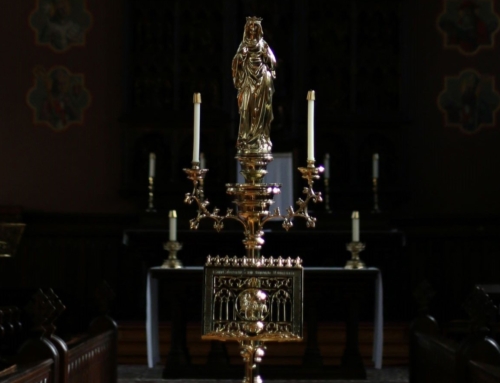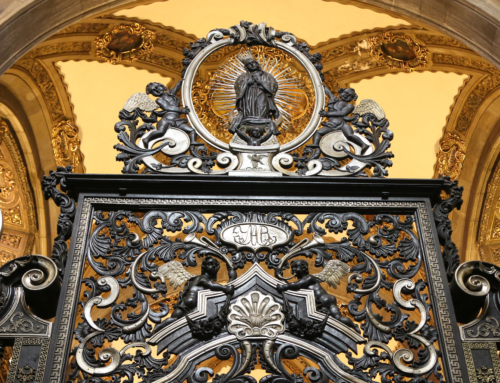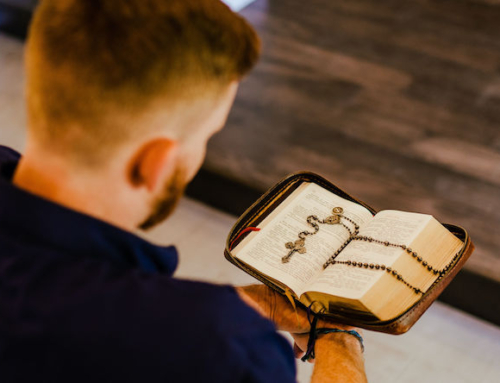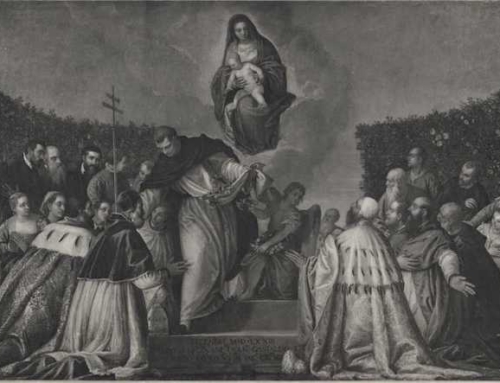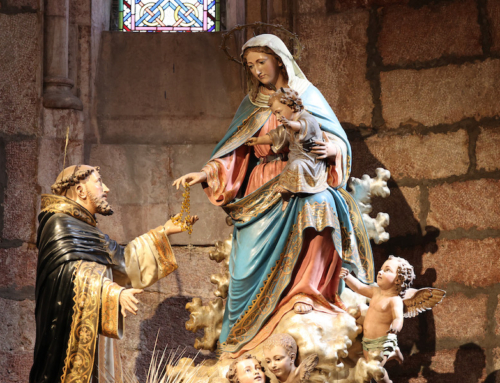One of my favorite things at the National Shrine of the Immaculate Conception is the series of mosaics depicting the original fifteen mysteries of the Rosary. Each mystery is paired with an event in the Old Testament that somehow foretells it. Some of the connections are fairly obvious. The slaughter of the Passover lamb, for example, is paired with the death of Jesus, and the Nativity is connected with Isaiah’s prophecy to King Ahaz: “a virgin shall conceive and bear a son, and shall call his name Immanuel” (Is 7:14). Some are more obscure. For example, the finding of Jesus teaching in the Temple is connected with the rescue of Susanna, when the young Daniel defended her before the assembly against the two perjuring elders.
One of the most striking juxtapositions is that of the angel’s annunciation to Mary and the call of Moses at Mount Horeb by way of the burning bush. The connection has been made at least since the fourth century, when St. Gregory of Nyssa observed, “The light of divinity . . . did not consume the burning bush, even as the flower of her virginity was not withered by giving birth.”
The burning bush signifies also the result of the Annunciation and Mary’s fiat, namely, the Incarnation of the Son of God. Just as the fire did not consume the bush, so the divinity of Jesus did not destroy his humanity. We beneficiaries of the ancient Nicene formulation “true God and true man” may not appreciate how easy it is to be mistaken about the relationship of Christ’s humanity to his divinity. Among the early Christians, some mistakenly thought it beneath the divine dignity to be united to matter, and so they concluded that Jesus could not have been truly human, but only apparently so. Others thought (again, incorrectly) that Jesus did not possess a human mind or will, since the divine ones would seem to render them redundant. Others worried that the human nature of Christ threatened to diminish his divinity, so they divided him into two persons, such that the Blessed Virgin could be said to be the mother of Christ, but not the mother of God. Ever since, when the Church calls Mary the mother of God, she means to imply that full divinity and full humanity are united in the one person of Christ.
Each of these errors tends to suggest that human nature and the divine nature are somehow at odds. It is as if God could defile himself by coming too close to humanity, or that humanity could be crushed by the weight of divine glory. But the burning bush, the Blessed Virgin, and the Incarnation teach us that divinization does not entail dehumanization. The Creator so transcends his creation that between God and creatures there is no comparison, no contest. And humanity itself is open to transcendence, such that in knowing God the human being is brought to human perfection.
God will not destroy our humanity. He doesn’t want to take away our identity. On the contrary, he wants to show us who we truly are and to free us from tiresome self-misconceptions. This is part of the point of penance. Why should we make peace with tendencies to self-destruction? Why should we say, “In the end, the flesh is all I am,” when God is waiting to conform us to his Son? The divine fire may cause us pain, but it also causes joy–a joy that will endure–because it makes us burn with the love of God.
✠
Image: Mary as the Burning Bush



